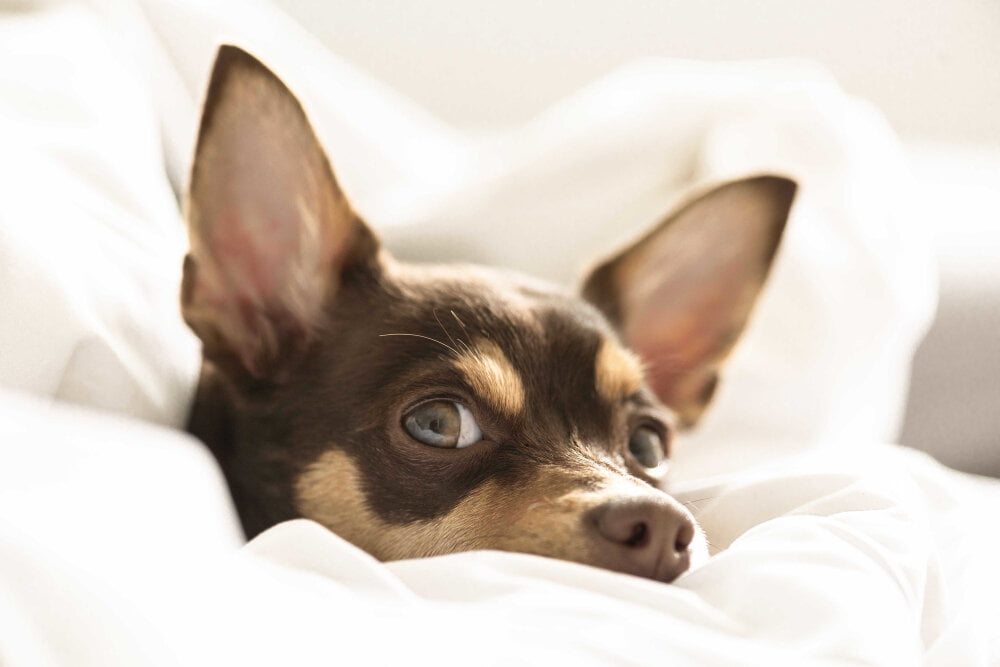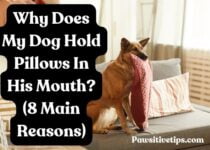Will Mothballs keep dogs out of flower bed? (Best Answer)
Gardening enthusiasts often find solace in tending to their flower beds, creating beautiful landscapes and vibrant displays of nature’s wonders. However, for dog owners, maintaining a garden can pose a unique challenge. Our furry friends, with their curious nature and boundless energy, may sometimes venture into the flower beds, causing unintended damage to our carefully nurtured plants.
One popular notion that has circulated is the use of mothballs to deter dogs from flower beds. But will mothballs keep dogs out of flower beds? In this guide, we’ll look at the effectiveness of mothballs as a dog deterrent, considering both the potential risks and alternative approaches to keeping our beloved pets away from our precious flower beds.
Related articles
- Can I spray Febreze on my dogs bed? (Don’t skip this!)
- Washing Dog Bed with Vinegar and Baking Soda: Find out how to do it
Understanding Mothballs
Before diving into the question at hand, let’s first understand what mothballs are and how they work. Mothballs are small, solid pesticide products that contain chemicals like naphthalene or paradichlorobenzene. These compounds evaporate slowly, releasing a strong odor that repels insects, particularly moths, and other pests.
Mothballs are commonly used to protect clothing and fabrics from moth damage when stored for long periods. They are not designed or labeled for outdoor use, including flower beds. Therefore, using them for any purpose other than their intended use can pose risks to both humans and animals.
Will Mothballs keep dogs out of flower beds?
Yes, mothballs can be used to keep dogs out of flower beds, but it is not recommended. Mothballs contain toxic chemicals that can be harmful to dogs when ingested or inhaled. It’s important to prioritize the safety and well-being of our pets by exploring safer alternatives such as physical barriers, training, natural deterrents, designated dog areas, or dog-friendly deterrent collars.
The risks of Mothballs for dogs
While mothballs may have a strong scent that repels insects, they also emit toxic fumes that can be harmful to dogs and other pets. Dogs have a heightened sense of smell, making them more sensitive to the chemical compounds found in mothballs. So, ingesting or inhaling these chemicals can lead to a range of health issues, including:
Gastrointestinal problems
Swallowing mothballs can cause stomach upset, vomiting, diarrhea, and abdominal pain in dogs. These symptoms can be distressing for our dogs and may require veterinary attention.
Respiratory issues
Inhaling the fumes from mothballs can irritate a dog’s respiratory system, leading to coughing, wheezing, and difficulty breathing. This is particularly concerning for dogs with pre-existing respiratory conditions, such as brachycephalic breeds.
Organ damage
The toxic chemicals found in mothballs can have a detrimental effect on a dog’s internal organs, including the liver and kidneys. Prolonged exposure or ingestion can result in severe organ damage, posing a significant threat to our pets’ well-being.
Given these potential risks, it’s crucial to look at some of the safer alternatives to keeping dogs out of flower beds.
Safe Alternatives to Mothballs
When it comes to deterring dogs from flower beds, it’s important to prioritize their safety and well-being. Fortunately, there are several effective and pet-friendly alternatives to mothballs that can help protect your garden while keeping your furry friend happy. Let’s take a look at some of these options:
1. Physical Barriers
Installing physical barriers around your flower beds can be an effective way to keep dogs at bay. Fencing or garden borders made of materials like wire, decorative rocks, or even recycled plastic bottles can create a clear boundary, preventing your dog from accessing the flower beds. These barriers can be aesthetically pleasing while serving their purpose.
2. Training and positive reinforcement
Teaching your dog basic obedience commands and reinforcing good behavior through positive reinforcement can go a long way toward preventing them from entering the flower beds. Rewarding your dog with treats, praise, and playtime when they listen to your commands will help them associate those behaviors with positive experiences. For instance, you can train your dog to “stay” or “leave it” when approaching the flower beds, redirecting their attention to a more appropriate area or activity. And for you to achieve the desired result, you need to be consistent and patient with your dog.
3. Natural dog deterrents
Certain scents and substances are naturally disliked by dogs, making them effective deterrents for keeping them away from flower beds. Consider using dog-friendly options like citrus peels, vinegar, or diluted essential oils with scents that dogs find unpleasant, such as peppermint or eucalyptus. These natural alternatives not only help protect your plants but also provide a safer environment for your pets.
4. Designated dog area
Creating a designated area in your garden specifically for your dog can help satisfy their curiosity and energy, reducing the likelihood of them wandering into the flower beds. This area can be filled with dog-friendly toys, a comfortable resting spot, and even a small sandbox for digging. By providing an appealing space for your dog, you can redirect their attention away from your flower beds.
5. Collars and Barriers
In certain cases, when other methods haven’t been successful, you can explore the use of dog-friendly deterrent collars or barriers. These products emit ultrasonic sounds or vibrations when the dog approaches restricted areas, gently discouraging them from entering. However, it’s important to choose high-quality, well-reviewed products that prioritize your dog’s comfort and well-being.
Conclusion
While the idea of using mothballs to keep dogs out of flower beds may seem tempting, it’s crucial to prioritize the safety and health of our beloved pets. Mothballs contain toxic chemicals that pose serious risks when exposed to dogs. Instead, opt for safe alternatives such as physical barriers, positive reinforcement training, natural deterrents, designated dog areas, or dog-friendly deterrent collars.



